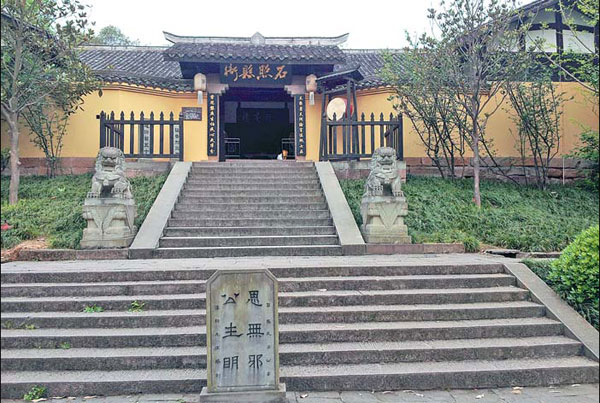Standing up to the Mongols
Updated: 2013-04-18 05:32
By Raymond Zhou (China Daily)
|
||||||||
|
Diaoyucheng presents a good example of building a defense system on hills in ancient times. Raymond Zhou / China Daily |
About 90 km north of downtown Chongqing lies a suburban community called Hechuan. It might be a misnomer to call it a "community" as it is home to 1.5 million residents, a city of sizeable scale in itself. In ancient times the population was surely much more sparse.
But a town of roughly 10,000 people made history by holding out against the invading Mongol army for as long as 36 years.
That town, called Diaoyucheng, sits atop a small hill, surrounded by three rivers that weave ribbon-like into each other and flow into the mighty Yangtze in downtown Chongqing.
When the Mongol army first made an assault on the town in 1259, it did not yield like countless Chinese cities under Song Dynasty (960-1279) administration. The local army was greatly outnumbered. There were 4,600 troops stationed inside the city wall, and even when local militia were included, the total only added up to some 10,000. The Mongolian army was seven times as large.
On a spring morning, I hike up the south entrance, which is by the side of one of the rivers. Even though this part of the city wall is almost vertical, it is a stretch to imagine ancient residents fishing from high up the walls. (Diaoyucheng means, literally, Fishing City.) But the hilltop is uneven enough to accommodate fishponds.
As one legend goes, local people hung out two big fish, allegedly as heavy as 15 kg, on the wall - to tantalize the Mongols that nature had blessed them with so much produce they would not be starved to submission.
The whole of the ancient city is a mere 2.5 square km in size. Many of the structures we see now were obviously recreated in recent years, but still much of the configuration of the old city, both the military and the civilian parts, remain. You will have to gaze beyond the stone walls and gates to see any modern highrises.
The 8-km-long walls form an effective defense. There was little advantage for horse-riding in such terrain. At one point, the Mongols attempted to dig a tunnel through the wall.
The Mongols seemed to be a stubborn lot. They fought a total of some 200 battles here. During one of these, a cannon shot from inside the wall hit the Mongol Khan who was leading his army, causing fatal injuries. Learning of his death, brother Kublai returned north to secure his power base, giving the Southern Song Dynasty a respite from continuous war.
Eventually, the city was brought to its knees by an unrelenting drought and ensuing famine. Insiders opened the city gates after negotiating a peace treaty, which the Mongols honored by not carrying out one of their customary genocides.
Back to the fishing story. A rocky platform up the south gate has holes in it. The ancient myth interprets them as holders for fishing poles, which a mythical giant uses to throw down lines into the river and return with a bountiful catch. He uses his fist to smash nine woks on the rock and cooks the fish for anyone in need.
When the Japanese bombed Chongqing, China's wartime capital, during the War of Resistance against Japanese Aggression, a military school retreated to the Fishing City. It was history repeating itself, but the tales of what happened here hundreds of years earlier must have been an inspiration to the cadets.

 'Taken 2' grabs movie box office crown
'Taken 2' grabs movie box office crown
 Rihanna's 'Diamonds' tops UK pop chart
Rihanna's 'Diamonds' tops UK pop chart
 Fans get look at vintage Rolling Stones
Fans get look at vintage Rolling Stones
 Celebrities attend Power of Women event
Celebrities attend Power of Women event
 Ang Lee breaks 'every rule' to make unlikely new Life of Pi film
Ang Lee breaks 'every rule' to make unlikely new Life of Pi film
 Rihanna almost thrown out of nightclub
Rihanna almost thrown out of nightclub
 'Dark Knight' wins weekend box office
'Dark Knight' wins weekend box office
 'Total Recall' stars gather in Beverly Hills
'Total Recall' stars gather in Beverly Hills
Most Viewed
Editor's Picks

|

|

|

|

|

|
Today's Top News
Chinese fleet monitors Japanese ships near Diaoyu
Health new priority for quake zone
Inspired by Guan, more Chinese pick up golf
Russia criticizes US reports on human rights
China, ROK criticize visits to shrine
Sino-US shared interests emphasized
China 'aims to share its dream with world'
Chinese president appoints 5 new ambassadors
US Weekly

|

|








